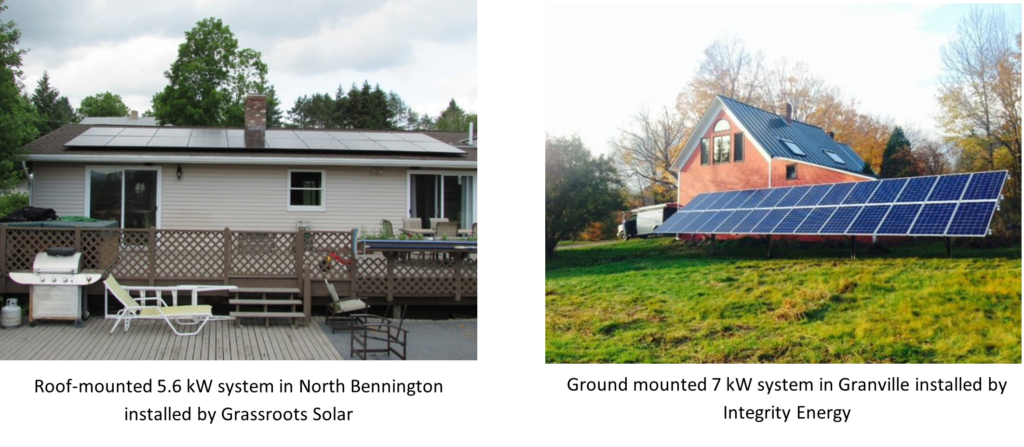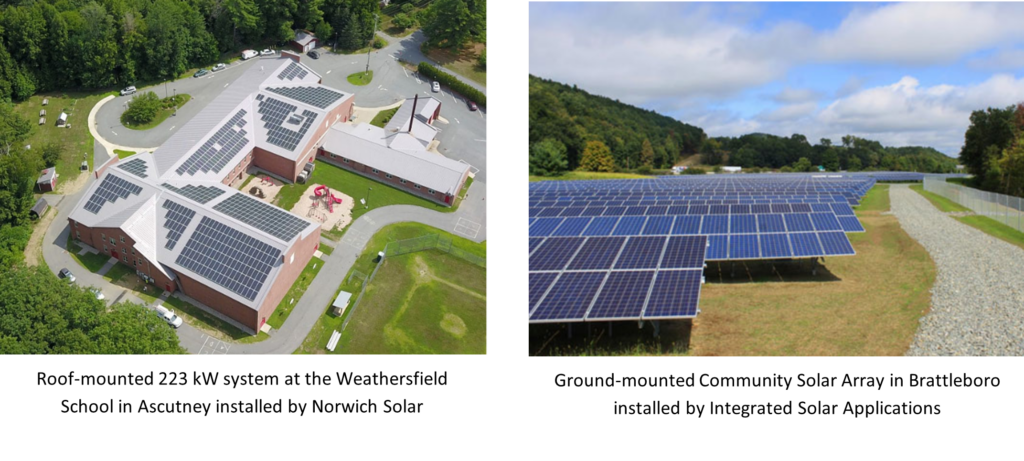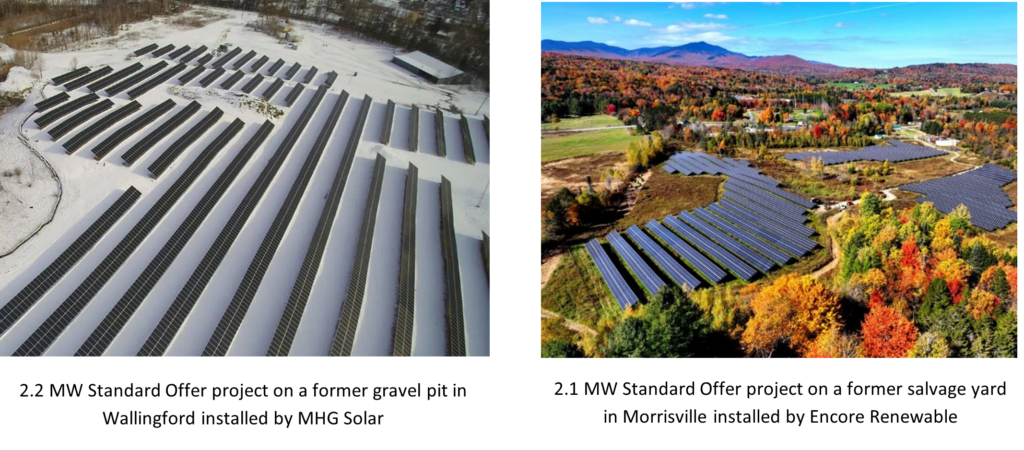Summary:
In 2022, 1,966 of the 2,097 solar systems installed in Vermont were smaller than 15 kW in size. These systems are typically installed on rooftops and backyards and provide power to a single household or business. Another 129 systems midsized systems supported the power need of Vermont communities and businesses. These projects include community solar arrays that provide low-income families, renters and and individuals whose homes are not suitable for solar with access to renewable energy. Two 2 MW systems also came online in 2022 as part of the Standard Offer program.
As of 2022, Vermont had 491 MW of solar capacity installed across 19,460 sites. More than 92% of these systems are smaller than 15 kW, typically serving the electricity needs of a single-family or small business. Another 7% of systems are between 15 kW and 500 kW in size, systems that might provide power to a school or function as a community solar array. The remaining systems are larger projects primarily built under the Standard Offer program or under a direct power purchase agreement between a developer and a utility.
Small Scale Solar for Homes and Businesses
There were nearly 18,000 small-scale solar systems (up to 15 kW in size) installed in Vermont as of the end of 2022. The systems are integrated into the developed landscape, either roof-mounted panels or ground-mounted systems in backyards. These systems allow families to lower their electricity bills while feeding clean energy into the grid. Depending on when the project was built and what incentives and tax credits were available, these projects might have an 8 – 12-year payback period for the homeowner.

Mid-sized solar for Businesses and Communities
Another 1,400 solar projects sized between 15 kW and 500 kW (the maximum size for net-metered projects) were installed in Vermont by the end of 2022. At the smaller end of this range, many of these projects are installed on-site and serve a single business or even a heavily electrified household. At the upper end of the spectrum, these projects are predominantly ground-mounted and generally provide electricity to offsite users. The users include schools, businesses, and families that cannot access or afford solar at their homes, low-income Vermonters, renters, and individuals whose homes are not suitable for solar. The projects provide approximately 40% of Vermont’s installed solar capacity.

Multi-megawatt Solar Projects
There were 66 installed solar projects that larger than 500 kW in Vermont as of the end of 2022. The majority of these projects were built under the Standard Offer Program and are typically between 1 MW and 2.2 MW. The projects are selected through a reverse auction and the power that they produce is allocated to Vermont’s utilities based on their retail sales. The largest current solar project is a 20 MW facility located in Ludlow and Cavendish. Power from this project is sold to VEPPI under a 20-year contract. Projects larger than 500 kW account for 35% of the installed solar capacity in Vermont.

Solar and Vermont Land Use
Solar in Vermont is constructed on developed parcels, brownfields, and undeveloped land. The scale of solar development required to generate 20% of our power by 2030 does not pose a threat to either Vermont’s primary agricultural soils or forests. At the end of their useful lifespan, solar projects can be decommissioned to return the land to other uses or repowered with more efficient modules.
